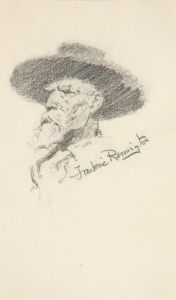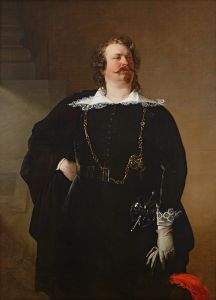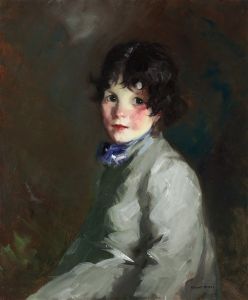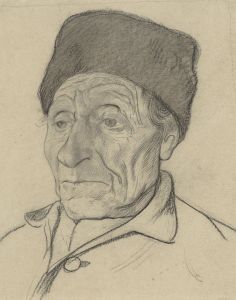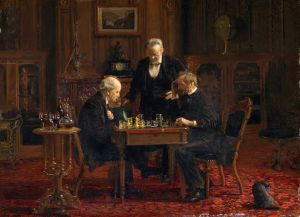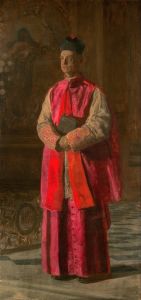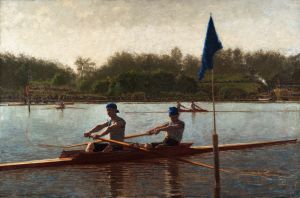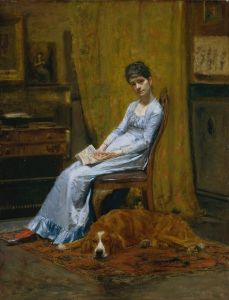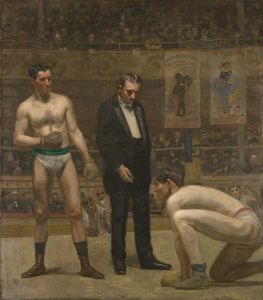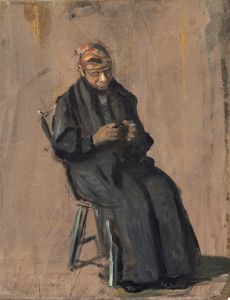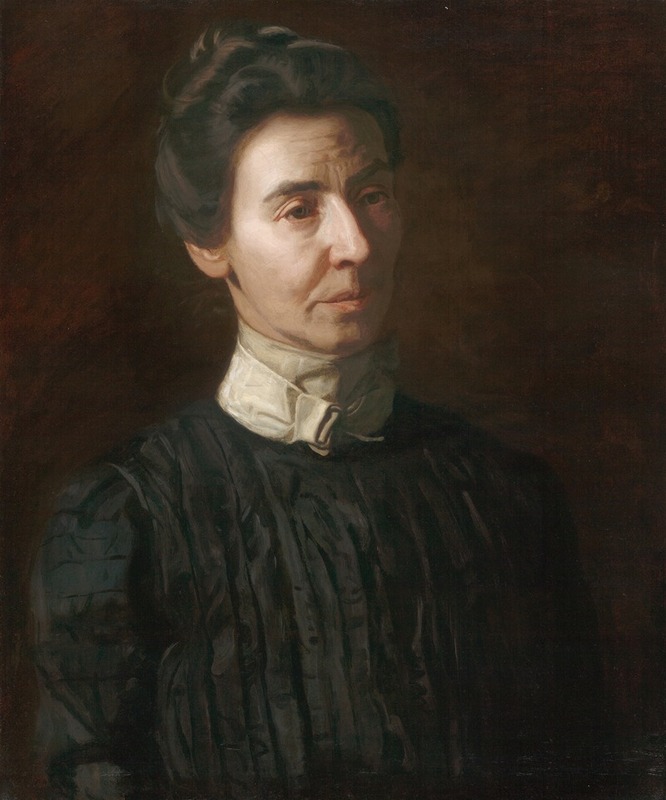
Portrait of Mary Adeline Williams
A hand-painted replica of Thomas Eakins’s masterpiece Portrait of Mary Adeline Williams, meticulously crafted by professional artists to capture the true essence of the original. Each piece is created with museum-quality canvas and rare mineral pigments, carefully painted by experienced artists with delicate brushstrokes and rich, layered colors to perfectly recreate the texture of the original artwork. Unlike machine-printed reproductions, this hand-painted version brings the painting to life, infused with the artist’s emotions and skill in every stroke. Whether for personal collection or home decoration, it instantly elevates the artistic atmosphere of any space.
Thomas Eakins, an influential American artist known for his realistic portrayals and innovative techniques, painted "Portrait of Mary Adeline Williams" in 1899. Eakins is celebrated for his contributions to American art, particularly in the realm of portraiture, where he sought to capture the essence and character of his subjects with meticulous attention to detail and a deep understanding of human anatomy.
Mary Adeline Williams, the subject of this portrait, was a close friend of Eakins and his family. She was known to have been a frequent visitor to the Eakins household and was part of the artist's social circle in Philadelphia. The portrait is a testament to Eakins' ability to convey the personality and inner life of his sitters, a skill that set him apart from many of his contemporaries.
In this painting, Eakins employs his characteristic style, which includes a focus on realism and a subdued color palette. The portrait is executed with a keen eye for detail, capturing the textures of Williams' clothing and the subtle expressions of her face. Eakins' use of light and shadow adds depth to the composition, highlighting his mastery of chiaroscuro—a technique that creates a strong contrast between light and dark areas to give the illusion of volume in modeling three-dimensional objects and figures.
Eakins' approach to portraiture was deeply influenced by his academic training and his interest in photography, which he often used as a tool to study human anatomy and movement. His dedication to realism was also reflected in his teaching methods at the Pennsylvania Academy of the Fine Arts, where he encouraged students to study the human form through dissections and live models.
The "Portrait of Mary Adeline Williams" is a reflection of Eakins' commitment to portraying his subjects with honesty and integrity. Unlike many artists of his time who idealized their subjects, Eakins sought to present them as they were, with all their complexities and imperfections. This approach sometimes led to controversy, as it challenged the conventions of portraiture and the expectations of his patrons.
Eakins' work, including this portrait, is characterized by a profound sense of empathy and a desire to understand the human condition. His portraits are not merely representations of physical appearance but are also explorations of the psychological and emotional states of his subjects. This depth of insight is what makes Eakins' portraits enduring works of art that continue to resonate with audiences today.
The "Portrait of Mary Adeline Williams" is housed in the collection of the Hirshhorn Museum and Sculpture Garden in Washington, D.C. It remains an important example of Eakins' skill as a portraitist and his contribution to American art. Through this work, viewers can appreciate Eakins' ability to capture the essence of his subjects and his commitment to realism, which has left a lasting impact on the field of portraiture.





